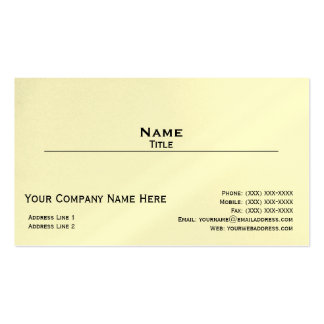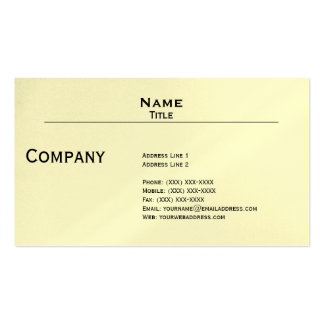
You may like dealing with reporters. You may hate dealing with reporters. But to successfully establish public awareness—and a positive public perception of you and/or your business—you need to know how to deal with the media.
The more you connect with reporters, the more valuable they’ll be. The key is to be prepared. These 10 rules will help you get started.
1. Don’t panic. Whenever a reporter contacts you—no matter what they’re contacting you about—view the inquiry as an opportunity—for you, for your business, for your profession.
2. Ask questions. Get the information you need to effectively present your messages. What does the reporter want? What’s the scope of his or her story? What outlet is the reporter writing for? What is his or her deadline?
3. Take a deep breath. If a reporter calls, take a deep breath—and promise the reporter you’ll call back at a particular time. We know from experience that one of the worst things you can do is talk to a reporter off the cuff. It’s a tough instinct to fight, because you will most likely be excited and flattered that the reporter wants to interview you. Unless, of course, controversy is brewing around an important topic, and you are in the hot seat. Either way, take your time. With ad-libbing comes peril, so take time to collect your thoughts.
4. Be prepared. Speaking of taking time to prep, here are some tips on what you should do to maximize your time in the spotlight.
5. Keep your responses short and quotable. After the 9/11 terrorist attacks, there was strong media interest in life insurance—who should have it, how much should they have, what kind should they buy. An insurance agent will tell you that there’s a long list of factors to consider in making those decisions—and will be happy to enumerate them for you. But one of the chief spokesmen for that industry boiled all of those considerations down into one simple phrase that ended up being quoted by journalists all over the country: “How much life insurance you need depends on two things: who you love, and who you owe.”
6. Stay positive. If you’re asked about a problem, talk about the solution. If you’re asked about something negative that happened in the past, talk about the present and the future.
7. Get the facts right. If there are factual errors in your responses that the reporter discovers later—or worse, that the reporter’s audience discovers later—it shoots the credibility of everything you’ve said. They might think you’re a liar, or they might just think you’re stupid. Neither outcome is a winning proposition for you.
8. Tell the truth, even when it’s tough. Grossly exaggerating, lying, or deliberately misleading a reporter and, by extension, his or her audience will destroy your perceived integrity and tarnish everything you have ever said publicly or will ever say. That said, what does it mean to tell the truth in an unpleasant situation?
Think of the truth as the number 10. How do you explain the number 10? There are lots of ways to do that. The truth can be:
10 + 0
9 + 1
8 + 2
7 + 3
6 + 4
5 + 5
0 + 10
5 + 4 + 1
4 + 4 + 2
3 + 3 + 4
and on and on and on.
The point is that the truth is not a black-and-white thing. It’s not an absolute thing. It is subject to interpretation, analysis, and explanation—responsible interpretation, analysis, and explanation. It doesn’t mean parsing what the meaning of “is” is, as President Bill Clinton so infamously put it.
Reporters, consumers, investors, Congress, regulators, and your own family will expect that when you explain a situation, you will arrange the elements of that situation to put you or your business or your product in the best possible light. They will expect you to have a position, a perspective, a point of view. They will accept a responsible explanation. They won’t necessarily swallow it whole, but they will give it credence.
9. Set the ground rules. Always assume that anything and everything you say will be reported and attributed specifically to you unless you have set other ground rules. Never speak to a reporter you don’t know, or don’t trust, off the record.
If you want to go on background to discuss a delicate issue, or to give a reporter information you want him or her to have but that you don’t want attributed to you, tell the reporter you want to go on background and ask the reporter to agree to that. Specify how the information or observation may be attributed before you start to talk—“persons familiar with the matter” or “industry observers” or “an insider at the XYZ Corp.” are examples.
Never put sensitive information into an email unless you want the contents of that email to be distributed publicly, with no context or explanation.
10. Befriend reporters. The long-term value of befriending reporters cannot be overstated. Don’t leave good media relations until a crisis or a scandal forces the issue. Cultivate and befriend reporters when there is no crisis. When they are seeking information about a topic you have expertise in, share it with them—if only to educate them about the subject matter. They will appreciate it—and remember it. If they have questions you can’t help them with, refer them to someone who can. They will appreciate it—and remember it. They will come to view you as a credible, reliable source. Then, when there’s a crisis or a hot news story, the reporters you’ve befriended will be more receptive to your point of view.
Remember, reporters are not the enemy. The are trying to do their jobs well and are determined to get to the heart of a story. They need people like you to inform them about an industry they are writing about—its trends, challenges, and innovations. Your job is to give them insights, perspective, and help them get the information right. To the extent that you can help a reporter do his or her job better, you’ll have an ally in the media when you most need one.
- If you’re unfamiliar with the reporter or the reporter’s news outlet, take a minute and check them out on the Internet so you know whom you’re dealing with.
- Don’t just think about what the reporter wants to ask about—think about the audience the reporter’s story is likely to reach, then tailor your responses to that audience. For example, if you are a financial professional, you might get a call from someone writing a personal finance column for a women’s magazine on the value of annuities in retirement planning. Or you might get a call from a reporter at the Wall Street Journal writing about the need for regulatory reform to curb annuities sales abuses. Clearly, your messaging needs to be different in each case.
- Decide on the two or three message points you want to make. Even if there are 10 points you can make, narrow them down to the most important two or three. Don’t leave it to the reporter to decide which of the many things you might say is most important. You decide which points are the important ones. Don’t overwhelm or confuse the reporter with anything else.
- Don’t get so fixated on the reporter’s questions that you forget to make your points. Know what you want to say—and use whatever questions you’re asked to say it. You can shift the focus of the conversation to where you want it to be by using “the bridge”—a simple connecting phrase such as:
“Let me put that mater in a slightly different perspective …”
“Let’s consider the larger issue here …”
“That’s an interesting question, but it overlooks an important point …”
5. Keep your responses short and quotable. After the 9/11 terrorist attacks, there was strong media interest in life insurance—who should have it, how much should they have, what kind should they buy. An insurance agent will tell you that there’s a long list of factors to consider in making those decisions—and will be happy to enumerate them for you. But one of the chief spokesmen for that industry boiled all of those considerations down into one simple phrase that ended up being quoted by journalists all over the country: “How much life insurance you need depends on two things: who you love, and who you owe.”
6. Stay positive. If you’re asked about a problem, talk about the solution. If you’re asked about something negative that happened in the past, talk about the present and the future.
7. Get the facts right. If there are factual errors in your responses that the reporter discovers later—or worse, that the reporter’s audience discovers later—it shoots the credibility of everything you’ve said. They might think you’re a liar, or they might just think you’re stupid. Neither outcome is a winning proposition for you.
8. Tell the truth, even when it’s tough. Grossly exaggerating, lying, or deliberately misleading a reporter and, by extension, his or her audience will destroy your perceived integrity and tarnish everything you have ever said publicly or will ever say. That said, what does it mean to tell the truth in an unpleasant situation?
Think of the truth as the number 10. How do you explain the number 10? There are lots of ways to do that. The truth can be:
10 + 0
9 + 1
8 + 2
7 + 3
6 + 4
5 + 5
0 + 10
5 + 4 + 1
4 + 4 + 2
3 + 3 + 4
and on and on and on.
The point is that the truth is not a black-and-white thing. It’s not an absolute thing. It is subject to interpretation, analysis, and explanation—responsible interpretation, analysis, and explanation. It doesn’t mean parsing what the meaning of “is” is, as President Bill Clinton so infamously put it.
Reporters, consumers, investors, Congress, regulators, and your own family will expect that when you explain a situation, you will arrange the elements of that situation to put you or your business or your product in the best possible light. They will expect you to have a position, a perspective, a point of view. They will accept a responsible explanation. They won’t necessarily swallow it whole, but they will give it credence.
9. Set the ground rules. Always assume that anything and everything you say will be reported and attributed specifically to you unless you have set other ground rules. Never speak to a reporter you don’t know, or don’t trust, off the record.
If you want to go on background to discuss a delicate issue, or to give a reporter information you want him or her to have but that you don’t want attributed to you, tell the reporter you want to go on background and ask the reporter to agree to that. Specify how the information or observation may be attributed before you start to talk—“persons familiar with the matter” or “industry observers” or “an insider at the XYZ Corp.” are examples.
Never put sensitive information into an email unless you want the contents of that email to be distributed publicly, with no context or explanation.
10. Befriend reporters. The long-term value of befriending reporters cannot be overstated. Don’t leave good media relations until a crisis or a scandal forces the issue. Cultivate and befriend reporters when there is no crisis. When they are seeking information about a topic you have expertise in, share it with them—if only to educate them about the subject matter. They will appreciate it—and remember it. If they have questions you can’t help them with, refer them to someone who can. They will appreciate it—and remember it. They will come to view you as a credible, reliable source. Then, when there’s a crisis or a hot news story, the reporters you’ve befriended will be more receptive to your point of view.
Remember, reporters are not the enemy. The are trying to do their jobs well and are determined to get to the heart of a story. They need people like you to inform them about an industry they are writing about—its trends, challenges, and innovations. Your job is to give them insights, perspective, and help them get the information right. To the extent that you can help a reporter do his or her job better, you’ll have an ally in the media when you most need one.







No comments:
Post a Comment